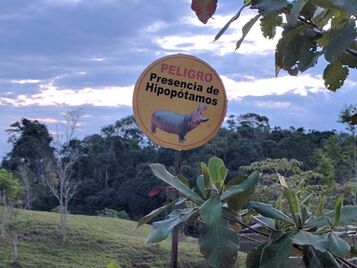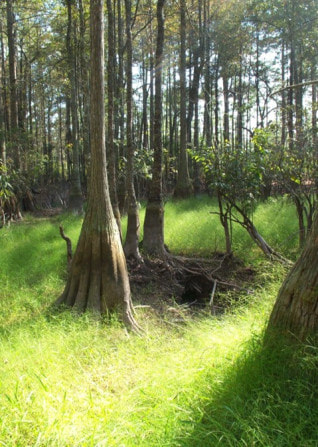The influence of large wildlife subsidies in the Mara River, Kenya
|
|
Much of my research tests fundamental questions about the influence of animal movements on ecosystem function, particularly through nutrient cycling within ecosystems and nutrient translocation across systems. I have been studying the influence of large wildlife on nutrient translocation from terrestrial to aquatic systems in the Mara River, Kenya, since 2010. The Mara River runs through the Maasai Mara National Reserve, Kenya, and Serengeti
|
National Park, Tanzania, and sustains a large population of native wildlife. The Mara is home to over 4,000 hippos, which graze in the grasslands at night and return to bask in the river during the day, and the Serengeti wildebeest migration, which crosses the Mara River multiple times in the northern portion of its range, occasionally resulting in mass drownings. We are working with colleagues at National Museums of Kenya to understand how inputs from large wildlife interact with hydrology to influence food web structure and ecosystem function. We have received funding for this research from the National Geographic Society (2012-2013), the National Science Foundation’s Ecosystem Program (2014-2018) and Population and Community Ecology program (2018-2022), and the JRS Biodiversity Foundation (2023-2026).
Pablo’s hippos – invasive hippos in the Magdalena River, Colombia
|
Pablo Escobar imported four hippos into Colombia for his private zoo, but after his death, they escaped into the nearby Magdalena River. Population modeling suggests their population may be growing at a rate of 9.5%, and they have been spotted up to 250 km away. Hippos are a large and charismatic species; they have the capacity for a high annual growth rate; they are known ecosystem engineers that can modify their environment; and they can lead to human-wildlife conflict. All of these characteristics suggest this introduction is likely to continue to grow and have substantial impacts on the socio-environmental system.
|
I am working with Beth Anderson (FIU), Suresh Sethi (Cornell), Germán Jiménez (Universidad Javeriana), David Echeverri (CORNARE) and others, with funding from the National Geographic Society, to use population modeling to understand their future population growth in response to potential management strategies and to study the coupled natural and human dynamics that may be influenced by this introduction.
Biological and hydrological connectivity of seasonal wetlands
|
Isolated, seasonal wetlands are critical habitats for biodiversity in the southeastern U.S., yet they are not protected under the Clean Water Act. I am interested in the role of both biological and hydrological connectivity in linking seasonal wetlands to one another, to the terrestrial system, and to permanent waterways. I am working with Lora Smith (Jones Center at Ichauway) to study the role of American alligators in the ecology of seasonal wetlands. Our research has shown that alligators provide biological connectivity between seasonal wetlands and riverine systems. Adult females use the wetlands as nesting and nursery sites, sub-adults disperse into nearby riverine systems once they reach a certain size, and adult males stay in riverine systems. We have also shown that alligators act as ecosystem engineers within the wetlands, by digging large and complex burrows that can extend the hydroperiod of the wetland and provide aquatic refugia for a range of other species.
|
I am also working with colleagues at University of Florida to investigate the role of hydrological dynamics in these systems in driving carbon storage and fluxes on the landscapes. Small changes in water level lead to substantial differences in the surface area of these wetlands the amount of the terrestrial-aquatic interface, which can yield hot spots and hot moments of carbon cycling. We plan to investigate the processes using high resolution field and remote sampling, laboratory experiments, and modeling in order to develop approaches to improve representation of these systems in Earth System models.

